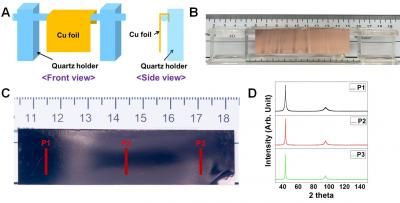U of C chemists discover recipe to design a better type of fuel cell
New formula helps increase the efficiency and decrease the cost
Advertisement
fuel cells are often touted as one method to help decrease society's addiction to fossil fuels. But there is still a lot of work to be done before fuel cells will be ready for mass market to be used in transportation, home heating and portable power for emergencies.
U of C chemists Jeff Hurd and George Shimizu have taken the science behind a specific type of fuel cell towards a higher level of design. They have discovered a new material that allows a PEM fuel cell, known as a polymer electrolyte membrane fuel cell, to work at a higher temperature. This discovery is extremely important in terms of increasing the efficiency and decreasing the cost of PEM fuel cells.
"This research will alter the way researchers have to this point perceived candidate materials for fuel cell applications," says Shimizu a professor in the Department of Chemistry at the University of Calgary.
A research paper by Shimizu, Hurd, Ramanathan Vaidhyanathan and Venkataraman Thangadurai of the University of Calgary, and Christopher Ratcliffe and Igor Moudrakovski of the Steacie Institute for Molecular Sciences, National Research Council, has just been published in Nature Chemistry. Shimizu filed a patent with the US patent office last year.
Currently, PEM fuel cells can produce energy from hydrogen below 90 °C, just under the boiling point of water. With Shimizu's material, energy can be produced at a higher temperature, up to 150 °C. This could ultimately make the fuel cell cheaper to produce because at a higher temperature less expensive metals can be used to convert hydrogen into energy. Currently, platinum is used which is extremely expensive. Also, reactions at a higher temperature would be faster thus increasing efficiency.
"Ours is an entirely new approach that strikes a balance between having a regular molecular structure and mobile components all while showing genuine promise of application," says co-author Hurd, a PhD candidate studying chemistry at the U of C.
Topics
Organizations
Other news from the department science

Get the chemical industry in your inbox
By submitting this form you agree that LUMITOS AG will send you the newsletter(s) selected above by email. Your data will not be passed on to third parties. Your data will be stored and processed in accordance with our data protection regulations. LUMITOS may contact you by email for the purpose of advertising or market and opinion surveys. You can revoke your consent at any time without giving reasons to LUMITOS AG, Ernst-Augustin-Str. 2, 12489 Berlin, Germany or by e-mail at revoke@lumitos.com with effect for the future. In addition, each email contains a link to unsubscribe from the corresponding newsletter.
Most read news
More news from our other portals
Last viewed contents
Dioxin-like PCBs in pork from Ireland - Recall by Irish authorities to avert health hazards for consumers in Europe

NUS researchers develop a novel strategy for growing two-dimensional transition metal dichalcogenides - This approach provides a promising method for phase engineering of 2D TMDs and fabricating 2D heterostructure devices























































